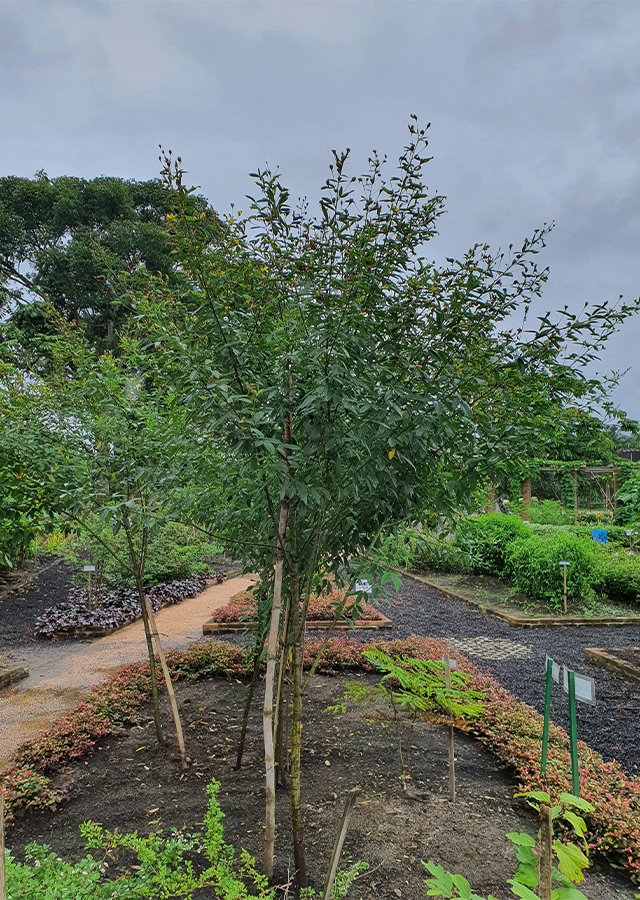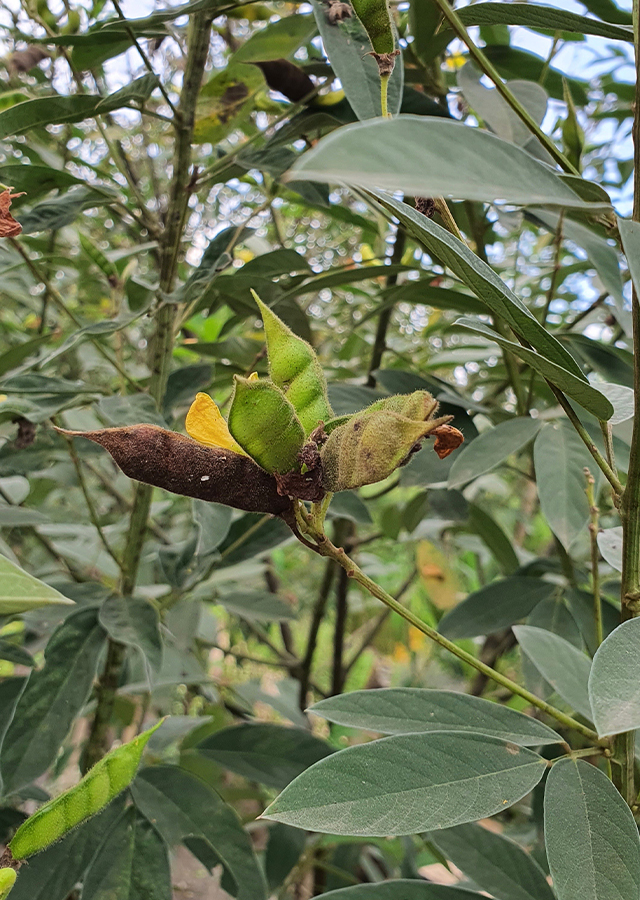Traditional Herbs from Cajanus cajan
herpes_zoster
- Wash and grind 10-20 fresh leaves.
- Spread on the herpes blisters then cover with gauze, change 3-4 times a day.
pain_in_the_mouth
- Wash 5 -10 young pigeon pea leaves.
- Chew for a few moments then throw away dregs.
treatment_batuk_diarrhea_and_stomach_disorders
- Prepare 80 g of fresh pigeon pea leaves and 3 glasses of water.
- Boil the leaves until boiling and the remaining half of the water, cool then strain.
- Drink 3 times a day, each 1\u20442 glasses.
What is Cajanus cajan Looks like??



Parts of Cajanus cajan that could be used
- Leaves
- Seeds
- Roots
- Stems
Cajanus cajan Distribution
Pigeon peas originate from India and spread to Southeast Asia. Arrived in Africa approximately 2,000 years BC, then brought to America by slaves. This plant has medicinal properties, and is also a food source in India and Southeast Asia. The pods and leaves can be consumed as vegetables. The seeds are used as a substitute for soybeans to make tempeh or tofu.Agroecology of Cajanus cajan
Generally found in tropical areas in the lowlands up to an altitude of 1,500 m above sea level, temperature 20-30 °C, rainfall 500-1,000 mm/year. Does not like very acidic soil, grows well in a soil pH range of 5.5-6.5. Drought tolerant and likes full sun.
Morphology of Cajanus cajan
- Taproot, has rhizobium.
- Stem woody, round, grooved, hairy, green-brown.
- Leaves three-leafed, spirally arranged on the stem, notched at the top, leaf tongue small, oval, hairy.", "Compound flowers, butterfly-shaped, yellow crown and pollen, one pistil, small flower clusters, grow on the shoots or leaf axils.
- Fruits are flat, straight pods or long sickle-shaped 4-10 cm, contains 2-9 seeds, green.
- Seeds\u00a0round or oval, color varies, namely grayish white, red, brown, purplish.
Cultivation of Cajanus cajan
Generative propagation (seeds). Seeds can germinate 2-3 weeks after sowing.
Cajanus cajan, more details :
Chemical Content of Cajanus cajanFlavonoids, saponins, polyphenols, tannins, alkaloids, cyanogenic glycosides, anthocyanins, cajanin, anthraquinone glucoside, genistein, longistylin.
Benefits of Cajanus cajan
Treats wounds, hepatitis, dysentery, diabetes, ringworm, shingles, coughs, diarrhea, stomach disorders, canker sores, jaundice, worms, bruises, itching, malaria, liver damage due to alcohol, has activity as an anticancer, antioxidant, and antibacterial.
Simplisia of Cajanus cajan
Another Facts for Cajanus cajan :
Synonym of Cajanus cajanCajanum thora Raf., Cajanus bicolor DC., Cajanus flavus DC.
Habitus of Cajanus cajan
Bush. Annual shrub, up to 4 m high
Habitat of Cajanus cajan
- Bushland
- Grassland
No comments:
Post a Comment